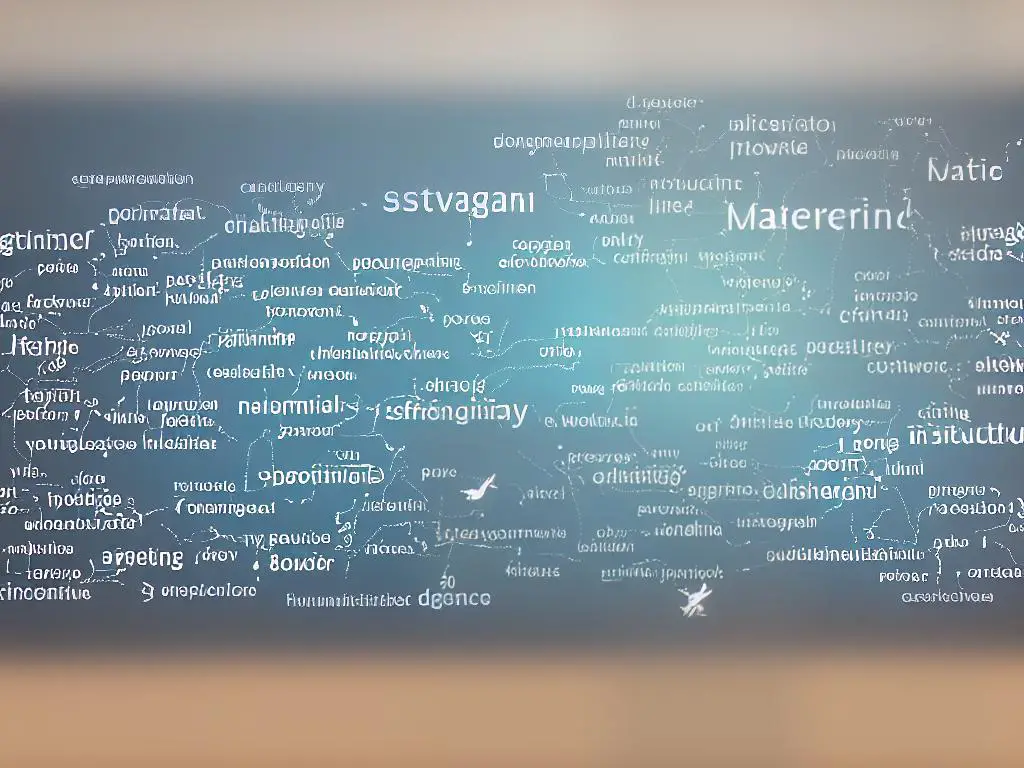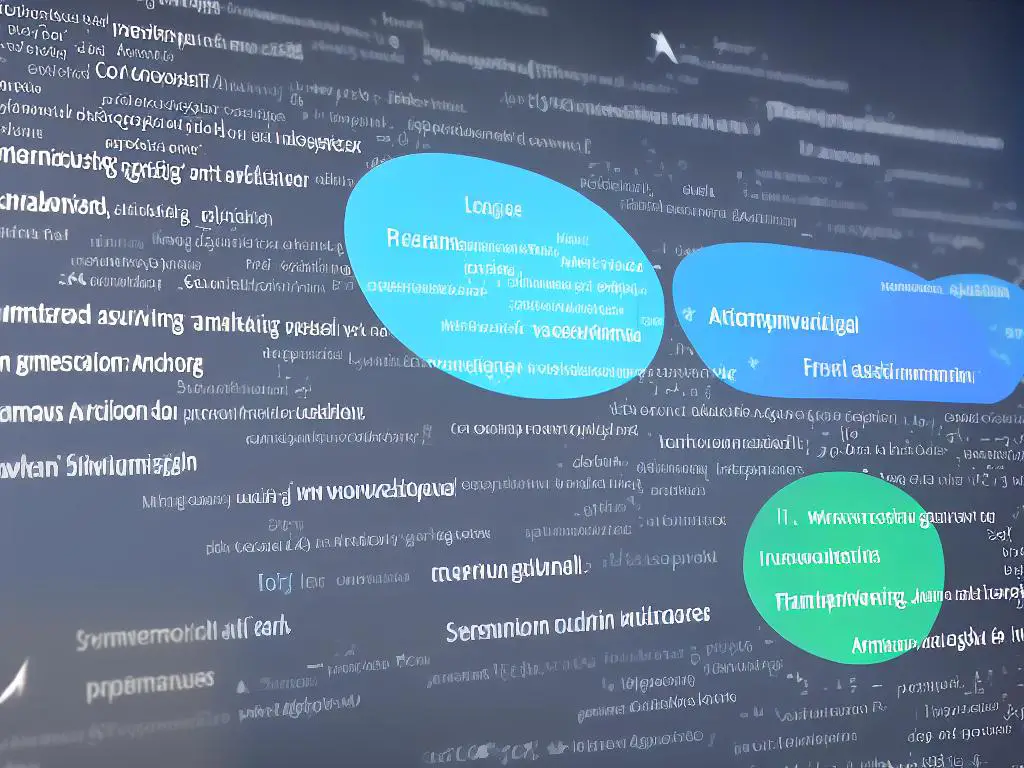The rapid advancements in artificial intelligence and natural language processing have transformed the way we interact with technology, bringing forth a new era of innovation through generative pre-trained models such as GPT and GPT-Based Applications.
As industry experts, it is crucial for us to develop a comprehensive understanding of GPT-based applications, unlocking their potential to create groundbreaking solutions for various sectors. In this essay, we delve into the depths of GPT architecture, language modeling, text generation techniques, case studies, ethical considerations, and best practices for developing custom GPT-based applications.
Understanding GPT Architecture
Table of Contents
- 0.1 Understanding GPT Architecture
- 0.2 GPT-based Language Modeling
- 0.3 Text Generation in GPT-Based Applications
- 0.4 Case Studies: Successful GPT-Based Applications
- 0.5 Ethical Considerations and Bias in GPT-Based Applications
- 1 Addressing potential biases in GPT-based applications
- 2 Privacy concerns
- 3 Fair use and intellectual property concerns
- 4 Dissemination of information
- 5 Collaborating on responsible GPT-based applications use
One of the fundamental building blocks of GPT architecture is transformers, which leverage self-attention mechanisms. Self-attention allows the model to weigh the significance of each input token relative to the others when making predictions.
Transformer-based architectures have been successful in natural language processing tasks, including machine translation, sentiment analysis, and question-answering systems. The transformer architecture’s ability to digest the context behind each input token makes it ideal for GPT-based applications.
Another important aspect of GPT architecture is tokenization. Tokenization is the process of breaking input text into smaller chunks or tokens, essentially converting unstructured text data into structured data for further processing.
In GPT, tokenization is done using a technique called Byte Pair Encoding (BPE). The BPE algorithm works by iteratively merging frequent pairs of characters until a desired vocabulary size is achieved. This method accommodates out-of-vocabulary tokens, ensuring that the learned embeddings can efficiently represent a wide range of text, ultimately enhancing the performance of GPT-based applications.
Embeddings play a vital role in GPT architecture as they serve as a continuous representation of tokens. These vector representations capture the semantic and syntactic information of words and enable the model to understand their relationship and meaning.
In GPT, token embeddings and positional embeddings are combined to create an input representation for the transformer. The token embeddings represent the specific words, while the positional embeddings help the model understand the order of the tokens within a sequence. This fusion of embeddings aids the transformer in comprehending the context and dependencies among input tokens.
A crucial mechanism within GPT architecture is the self-attention mechanism, which enables the model to selectively focus on different parts of the input sequence. This is achieved by assigning an attention score to each token that measures the relevance of that token to the current context.
The self-attention mechanism consists of three main components: the query, key, and value matrices generated from the input embeddings. These components are used to compute attention scores, ultimately helping the model understand and emphasize the crucial relationships within the sequence.
As the field of natural language processing (NLP) continues to evolve, newer versions of GPT models, such as GPT-2, GPT-3, and their variants, have emerged. These models boast improvements in architecture, training data size, and the number of parameters, resulting in exceptional performance across a diverse range of NLP tasks.
Researchers and industry experts are consistently pushing the boundaries to introduce more efficient, powerful, and versatile GPT-based applications that have the potential to revolutionize various aspects of human-computer interaction and provide valuable insights into language understanding.

GPT-based Language Modeling
One of the defining features of GPT-based models is the use of transformer architecture, which has significantly revolutionized the NLP landscape through its advanced understanding and generation of human-like text. Transformers outperform traditional architectures like LSTMs (Long Short-Term Memory) and RNNs (Recurrent Neural Networks) due to their innate self-attention mechanisms.
These mechanisms allow the models to effectively learn complex language patterns, semantic relationships, and long-range dependencies in text, further cementing their position as an essential tool for developing the next generation of NLP applications.
The training process of GPT-based models consists of two important steps: pretraining and fine-tuning. In the pretraining phase, models are exposed to extensive amounts of text data to learn the general structure of a language. During this phase, the model learns to predict the next word in a sequence, thereby obtaining a generalized understanding of language grammar, syntax, and semantics.
After the pretraining phase, fine-tuning is performed using domain-specific data to adapt the model to specific tasks such as sentiment analysis, summarization, or machine translation, among others. Fine-tuning tailors the pretrained model to generate accurate and precise output desired for GPT-based applications.
When comparing GPT-based models to BERT (Bidirectional Encoder Representations from Transformers), another well-known language model, the main difference lies in their training objectives.
While GPT focuses on predicting the next word in a sequence, BERT is trained to consider the bidirectional context in its predictions, meaning that it reads text from both left-to-right and right-to-left during pretraining. This bidirectional context gives BERT an enhanced performance in tasks that require deeper contextual understanding. However, GPT-based models have an edge in text generation, as they consider the likelihood of a sequence.
There are various evaluation metrics used to assess GPT-based language models. One common metric is perplexity, which measures the capability of a language model to predict words in a sequence. Lower perplexity scores indicate better performance, as language models assign higher probabilities to the correct words in the sequence.
Other metrics such as BLEU (Bilingual Evaluation Understudy) and ROUGE (Recall-Oriented Understudy for Gisting Evaluation) are more focused on assessing the quality of generated text. These metrics compare the generated text to human-written reference texts to evaluate the correctness and fluency of the output.
It is essential to remember that GPT-based language models have their challenges, such as biases present in the training data, leading to inappropriate or harmful outputs. Researchers and developers are constantly pursuing innovative ways to address these challenges, namely by refining the training process, enhancing algorithms, and implementing more robust evaluation methodologies. GPT-based applications have the potential to revolutionize not just natural language processing (NLP) but also other industries, thus illustrating an exciting future for AI and machine learning.

Text Generation in GPT-Based Applications
Significant progress has been made in text generation techniques within GPT-based applications, as developers focus on fine-tuning these models. A commonly used method for creating coherent and controlled outputs involves sampling from the probability distribution of potential words or tokens. This process often incorporates techniques such as top-k sampling and nucleus (top-p) sampling, improving the model’s capacity to produce high-quality content while ensuring diversity and creative expression.
Temperature control plays a crucial role in refining the output of GPT-based models, as it directly affects the randomness of the generated text. Higher temperature values introduce more randomness, leading to diverse but sometimes less coherent text.
On the other hand, lower temperature settings result in more focused and consistent outputs, potentially making the text more predictable. Striking the right balance between temperature values can help optimize the text generation capabilities of GPT-based applications.
Truncation is another essential component of text generation in GPT-based applications, enabling the generation of text sequences of designated lengths.
This method is particularly useful for imposing reasonable limits on the output, preventing excessively long or nonsensical text from being produced. Through truncation, models can maintain coherence and structure, making the text more comprehensible and meaningful to the end user.
Despite the advancements in text generation techniques, GPT-based applications are not without their challenges and constraints. One major challenge lies in ensuring that the generated text is contextually relevant, engaging, and adheres to the ethical guidelines set forth by developers. Moreover, the possibility of unintended biases within the training data may introduce ethical concerns, highlighting the importance of responsibly developing and refining these models.
GPT-based applications have immense potential for advancing natural language processing across a wide range of industries, but one major concern is output unpredictability, which can result in text misaligned with the user’s intentions or expectations.
To address this, developers are continuously exploring advanced techniques to control and fine-tune the text generation processes, striving to improve overall usability and effectiveness in various domains. As research in this area rapidly evolves, the potential for GPT-based applications in different fields only continues to grow.

Case Studies: Successful GPT-Based Applications
A prime example of GPT-based models at work is machine translation, which breaks down language barriers, fosters global communication, and enhances cross-cultural understanding. OpenAI’s GPT-2 and GPT-3, for instance, have shown remarkable efficiency in translating languages, delivering contextually accurate results while preserving the original meaning.
Businesses and developers have harnessed this capability to streamline communication in multiple languages, reducing dependency on human translators and accelerating the translation process, making it increasingly easier for industries to adapt and benefit from these advanced applications.
Another groundbreaking application of GPT-based models is the development of smart chatbots, revolutionizing the way customers interact with businesses. ChatGPT, for example, is one of the more sophisticated chatbot systems utilizing GPT-3 architecture, providing human-like responses and handling a wide array of topics.
These AI-driven conversational agents not only improve customer support and user engagement but also facilitate personalized recommendations that can drive marketing and sales strategies for businesses.
Sentiment analysis is yet another area where GPT-based models have made significant strides in the realm of natural language processing. These models aid businesses in gauging consumer sentiment towards their products or services by analyzing vast amounts of online data, such as social media posts, reviews, and messages.
GPT-based sentiment analysis tools allow organizations to respond promptly, address customer concerns, and tailor their offerings based on the feedback received. This invaluable input empowers businesses to stay ahead of their competition and maintain high customer satisfaction levels.
Text summarization, a crucial aspect of information extraction, has also been revolutionized due to the advent of GPT-based models. Summarization algorithms, such as those leveraging GPT-3, enable efficient extraction of key information from large volumes of text, making it easier for users to glean insights.
For industries like journalism, finance, and legal services that require rapid assimilation of critical information, GPT-based summarization tools provide a competitive edge by enabling quick decision-making and eliminating the need to sift through extensive documents manually.
GPT-based models have revolutionized various applications and industries, with one notable area being virtual writing assistants. These AI-powered tools have the ability to generate contextually relevant and engaging content across a wide range of writing styles, from articles and blog posts to marketing copy and reports.
By significantly enhancing the efficiency and speed of content creation, GPT-based writing assistants provide authors and writers with unique ideas and perspectives to enrich their work.

Ethical Considerations and Bias in GPT-Based Applications
Addressing potential biases in GPT-based applications
When using GPT-based applications, it’s essential for users and developers to be aware of the potential biases in the data produced by these models. Since GPT-based models rely on vast amounts of data containing implicit biases from their sources, it’s crucial to identify and mitigate these biases in order to prevent harm and avoid perpetuating misconceptions. By working together, users and AI developers can ensure that GPT-based applications are not only powerful but also responsible and ethical.
Privacy concerns
Personal, public, and proprietary data could be incorporated into GPT-based applications, violating users’ privacy rights. Developers must ensure that the data utilized for training these models is sufficiently anonymized and cleaned of personally identifiable information (PII) to protect users’ privacy rights.
Fair use and intellectual property concerns
GPT-based applications may infringe upon existing intellectual property rights. Users and developers must ensure that generated content does not unlawfully replicate protected material to respect fair use and intellectual property concerns.
Dissemination of information
The distributed information generated by GPT-based applications creates ethical considerations. Users must be transparent, maintain factual accuracy, and share the origin and credibility of information generated to prevent the spread of false or misleading content.
Collaborating on responsible GPT-based applications use
Ensuring the responsible use of GPT-based applications is crucial and involves the collaboration of all stakeholders. This includes addressing issues of bias in datasets, promoting privacy protection measures, and maintaining transparency and accuracy in disseminating information.

Developing Custom GPT-Based Applications
In order to successfully develop custom GPT-based applications, it is essential to gain a deep understanding of the underlying technology and how it can be adapted for various use cases.
One way to achieve this is by leveraging available resources and APIs, such as OpenAI’s GPT-3 API. GPT-3 is an advanced language model capable of performing a wide range of tasks, from natural language understanding and generation to more complex tasks like language translation, summarization, and question-answering.
Customization is a crucial aspect of creating GPT-based applications, as it ensures that the model is tailored to the specific requirements of the application. This can be done using techniques like fine-tuning, in which developers train the model on specialized datasets to adapt the pretrained model to a particular domain or task.
The dataset should consist of the kind of data the application will encounter, thereby enabling the model to respond more accurately. It is essential to maintain a balance between generalization and specialization to prevent overfitting, ensuring that the model remains adaptable to broader contexts.
Another important factor to consider when developing custom GPT-based applications is the implementation of user experience. As these applications are primarily focused on user interaction through natural language, it is crucial to design an effective and intuitive communication interface. Developers should strive for seamless interaction that not only provides the necessary information to the user but also builds trust in the application’s ability to understand and assist.
Deploying GPT-based applications is another essential consideration, as the nature of these applications often requires considerable computational resources. In addition to selecting appropriate hardware configurations, developers must optimize the model’s performance and manage resource allocation effectively. This can entail a robust testing process to identify bottlenecks and ensure the model remains efficient in various operational conditions.
Moreover, maintaining the security and privacy of user data should also be a priority while developing GPT-based applications. Since these models are trained on vast amounts of publicly available text, they might inadvertently expose sensitive information during operation.
Developers must implement secure data storage and processing protocols, as well as monitoring systems to identify and mitigate such risks. Designing privacy-focused features into the application from the start will help build trust and ensure compliance with relevant regulations.

Ultimately, GPT-based applications have the power to revolutionize industries by streamlining processes, improving user experiences, and advancing natural language processing capabilities. By acquiring expertise in GPT models and their practical applications, we can drive innovation and create groundbreaking solutions to meet diverse needs.
However, it is equally important to acknowledge and address the ethical considerations tied to these powerful models. Through responsible development and mindful application of this cutting-edge technology, we can shape a future where GPT-based applications contribute meaningfully to the progress of various industries and enrich human experiences in remarkable ways.

I’m Dave, a passionate advocate and follower of all things AI. I am captivated by the marvels of artificial intelligence and how it continues to revolutionize our world every single day.
My fascination extends across the entire AI spectrum, but I have a special place in my heart for AgentGPT and AutoGPT. I am consistently amazed by the power and versatility of these tools, and I believe they hold the key to transforming how we interact with information and each other.
As I continue my journey in the vast world of AI, I look forward to exploring the ever-evolving capabilities of these technologies and sharing my insights and learnings with all of you. So let’s dive deep into the realm of AI together, and discover the limitless possibilities it offers!
Interests: Artificial Intelligence, AgentGPT, AutoGPT, Machine Learning, Natural Language Processing, Deep Learning, Conversational AI.


